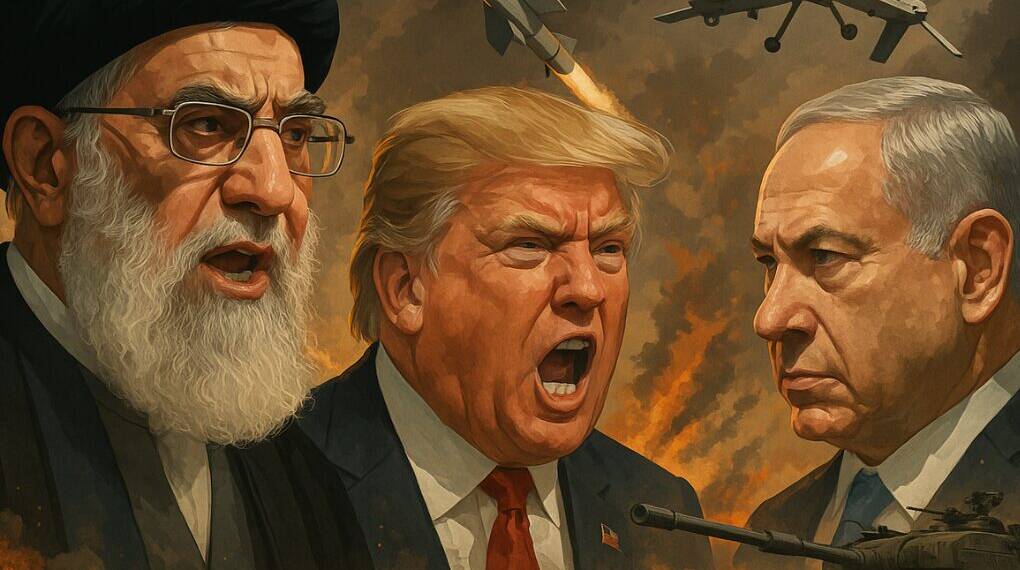The Strait of Hormuz is under Iran’s direct control, and by shutting this narrow passage it could deliver a powerful blow to global energy supply. Obviously, this would have far more severe effects than missiles landing on U.S. and Israeli bases, since its impact would span most countries worldwide—not just Israel or the U.S.
When people woke up Sunday morning (most people tend to sleep in on Sundays), they learned that the U.S. had entered the Iran–Israel war. In an unexpected strike, American B‑2 stealth bombers rained bombs on Iran’s Fordow, Natanz, and Isfahan nuclear sites. Reportedly, these bombers took off from Missouri’s Whiteman Air Force Base and, after flying roughly 12,000 kilometers, dropped six GBU‑57 bombs on Fordow and the other sites. Each GBU‑57 weighs about 14 tons and is called a bunker buster—it can penetrate 200 feet underground to destroy targets, and can easily pierce 60 feet‑thick concrete structures.
Information suggests the Fordow nuclear facility lies about 80–90 meters (300 feet) deep inside a mountain, so it’s very likely the bunker buster bombs completely obliterated the plant. At least that’s what President Donald Trump claims. Additionally, 30 Tomahawk cruise missiles were launched, severely damaging the Natanz and Isfahan sites. Although Israel had been targeting these sites already, it lacked the technical capability for underground hits like Fordow—so the U.S. stepped in.
Previously, Trump had given Iran a two‑week ultimatum, but apparently seeing increased activity at Fordow (or to surprise Iran), he ordered the strikes within just two days.
This is the first time in Trump’s tenure (including his first term and current one) that the U.S. has directly entered a war and carried out such a massive strike on a major country.
Understandably, this strike has dealt Iran a deep blow, and now Iran has declared its right to self-defense and announced a counterattack. In fact, this retaliation is also Iran’s compulsion—if the Islamic regime wants to preserve its credibility and power, it has to answer this strike forcefully.
But the big question is: how will Iran respond? Will it attack U.S. military bases in the Middle East, or use the world’s most sensitive maritime route—the Strait of Hormuz—as its strategic weapon?
U.S. Military Bases in the Middle East and Iran’s Range
U.S. military presence in the Middle East is extensive. There are about 20 permanent and temporary American military bases in Iraq, Kuwait, Bahrain, Qatar, Saudi Arabia, Jordan, Syria, Cyprus, and Turkey. According to CNN, around 40,000 U.S. soldiers are stationed at these bases—including over 2,500 in Iraq and about 9,000 in Bahrain, where the U.S. naval fifth fleet is headquartered.
These bases house billions of dollars’ worth of U.S. weapons and high-tech military hardware, and they fall within range of Iranian ballistic missiles. Thus, Iran may well target them in its response. Moreover, Iran’s foreign minister Abbas Araqchi has clearly signaled that the impact of the U.S. strike on Iran’s nuclear facilities will be “permanent,” and Iran will consider “all options” to protect its sovereignty and interests.
However, choosing that option won’t be easy—because the U.S. has already warned that any attack on its bases will yield even more dangerous consequences. If Iran attacks, it risks direct war with the U.S., and considering current global dynamics, it’s highly unlikely that it will receive direct support from allies like Russia or China. Therefore, Iran may lean toward the other option: utilizing its powerful position in the Strait of Hormuz.
Strait of Hormuz: Iran’s Strategic Pressure Point
Direct military strikes are one option, but Iran has an even more potent strategic weapon: the Strait of Hormuz. This narrow maritime corridor links the Gulf of Oman with the Persian Gulf and handles nearly 20% of global oil exports—that is, about 20 million barrels of oil daily. Countries from Iraq to Saudi Arabia, Bahrain, Oman, Qatar, Kuwait, and the UAE rely on this passage to transport oil to Europe and elsewhere.
But the northern shore of this corridor is entirely under Iran’s control, and Iran has established numerous naval bases there—Bandar Abbas, Jask, and Kish Island—housing large numbers of missile boats, warships, torpedoes, naval mines, and anti-ship missiles. Iran possesses over 3,000 naval mines, which it can deploy to choke off this strategic passage at any time.
Such a strategy could be a nightmare for the U.S. and its allies—not only disrupting global oil supplies but also potentially sending crude prices soaring and dragging the global economy into crisis. This would strike especially hard for Europe, which is already reeling from the ongoing Russia–Ukraine–driven energy crisis.
U.S. Response: Naval Readiness
To counteract this, the U.S. has deployed two carrier strike groups—USS Harry S Truman and USS Carl Vinson—to the region. If needed, USS Abraham Lincoln could be sent as well. Clearly, this full-scale preparedness is specifically aimed at Iran—but given Iran’s strategic position in Hormuz, naval mines, and missile stockpile, freeing the strait from Iranian control isn’t going to be easy.
The longer the fight in the Strait of Hormuz drags on, the more global pressure will build on the U.S. and its allies—especially from countries like India, Japan, and China, which would bear the brunt of any disruption. These nations will likely exert maximum effort to prevent war.
Iran could choose either path too- a symbolic strike against U.S. bases, similar to its response after General Qassem Soleimani’s killing. That restrained action avoided broader war, but this time chances are slimmer—Netanyahu and Trump have gone far beyond just disarming Iran—they’re aiming at dismantling its Islamic governance. Thus, the stakes involve not only Iran’s sovereignty but the survival of its Islamic leadership.








